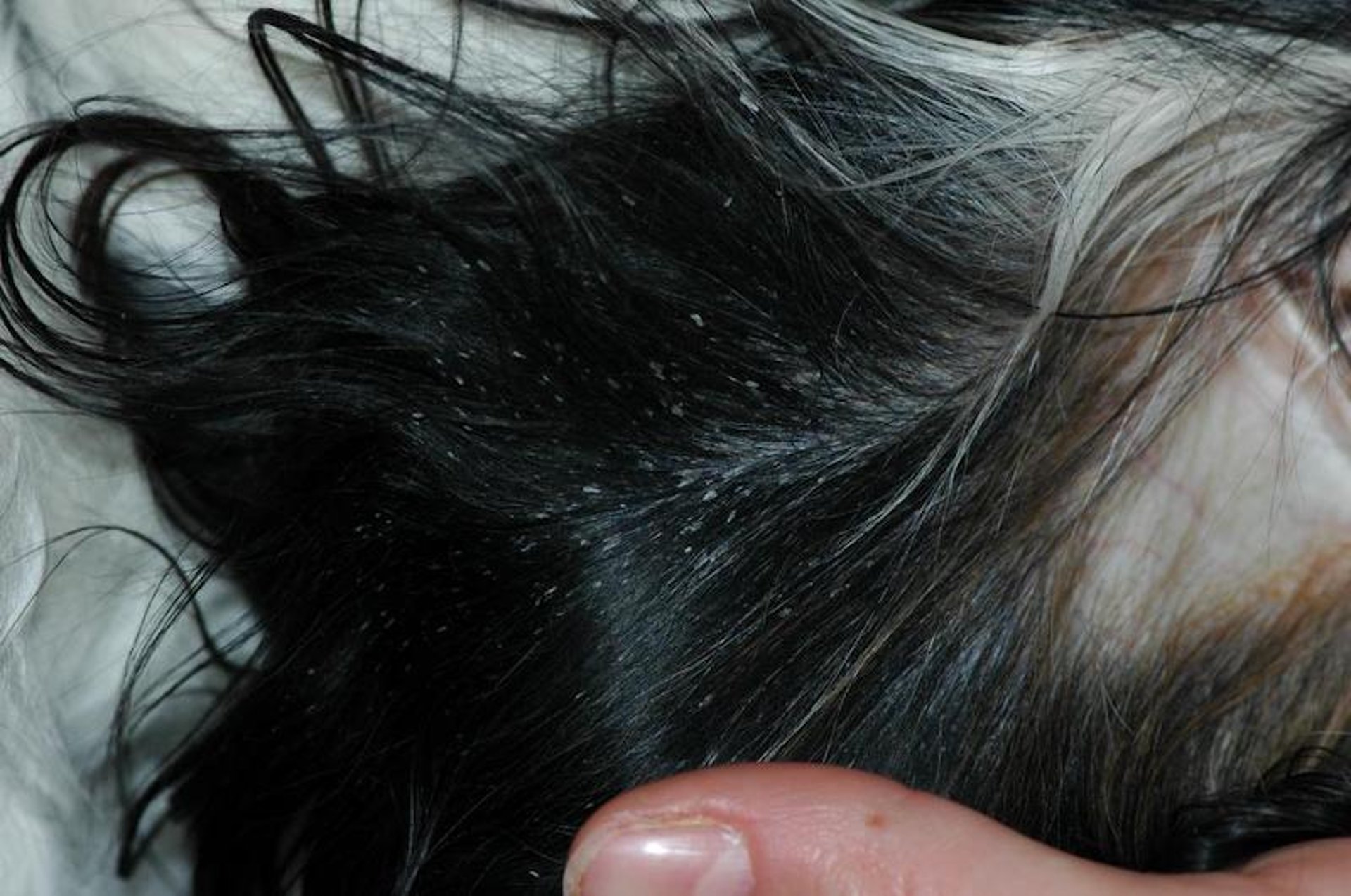Courtesy of Dr. Sheila Torres.
Sebaceous adenitis is uncommon in dogs and rare in cats. The cause is unknown, but the strong predisposition of certain canine breeds suggests that genetics plays a role. The proposed pathogenesis includes cell-mediated immunologic destruction of the sebaceous gland; several mechanisms have been proposed:
a primary cornification disorder of the glandular duct, resulting in obstruction and secondary inflammation of the gland
an anatomic defect of the sebaceous gland, leading to lipid leakage and a foreign body reaction;
an abnormal lipid metabolism, leading to glandular destruction
an immune-mediated or autoimmune disease directed against the sebaceous glands
Although any breed can be affected, the following breeds are predisposed:
Standard Poodles
Akitas
Samoyeds
Vizslas
Havanese
Springer Spaniels
Lhasa Apsos
Typically, lesions initially affect the pinnae, forehead, face, tail, and dorsal trunk but can become generalized. Lesions include alopecia and adherent scales that cast hair shafts. The severity and characteristics of clinical signs vary among breeds. Pruritus is variable and mostly associated with secondary bacterial infection. Histopathologic findings include diffuse absence of sebaceous glands, granulomatous to pyogranulomatous inflammation at the site of previous glands, and follicular keratosis.
Treatment options include:
cyclosporine (5 mg/kg, PO, once a day) in association with topical therapy.
vitamin A (1,000 IU/kg, PO, once a day)
doxycycline or minocycline 5 mg/kg, PO, every 12 hours; doxycycline and minocycline have been found to have multiple nonantibiotic effects beneficial for diseases with an inflammatory origin, including autoimmune diseases. niacinamide acts synergistically with tetracyclines for immunomodulatory effects.
omega 3/6 fatty acid supplement EPA 180 mg and DHA 120 mg/kg, PO, once a day
topical therapy (used in conjunction with systemic therapy). To help soften the adherent scales, a mixture of 70%–75% propylene glycol in water can be sprayed or used as a rinse on the animal’s coat and allowed to act for 2–3 hours before bathing with a medicated shampoo. Another option is to apply baby oil soaks (undiluted or diluted with water 1:1) for 1–6 hours before bathing with a medicated shampoo. Leave-on moisturizers can also be beneficial
For More Information

